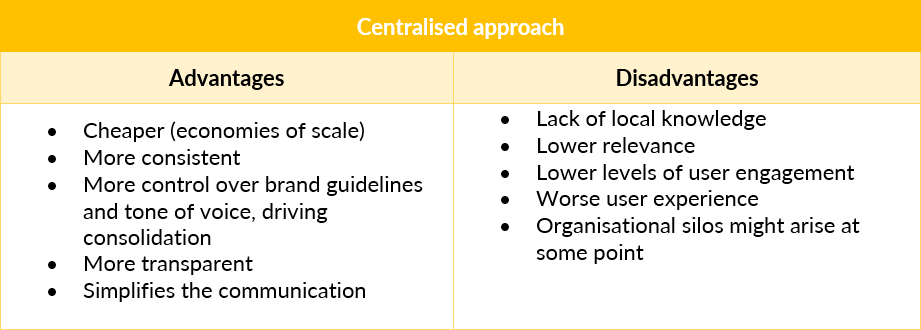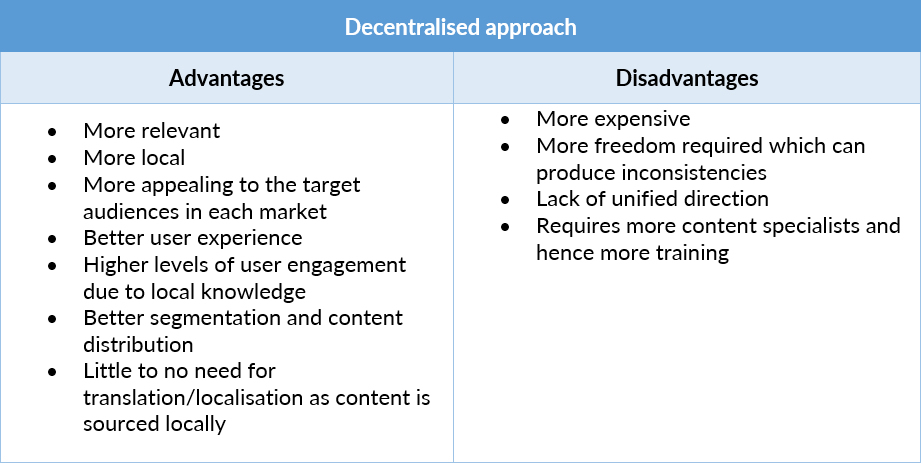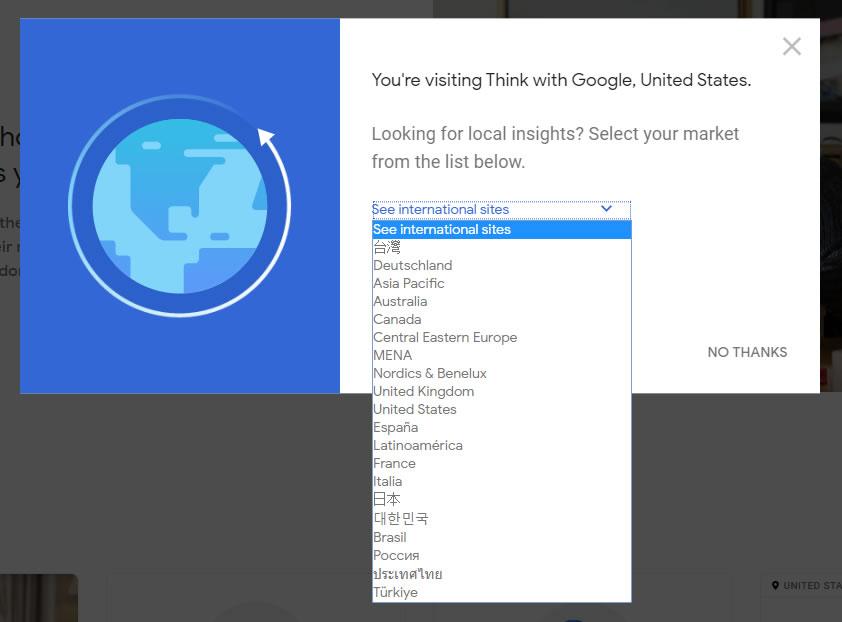
One of the main challenges that international corporations face when defining their global content marketing strategies across several markets is this: to centralise content (and to what degree) or not (going for a decentralised approach instead). Fortunately, one thing is very clear: the time of massive centralisation and mass communication is over, and brands have to get permission from users and prospects so they can reach them with personalised messages and compelling offers.
It is true that we are now living in the era of big data and marketing automation, and these are often used to amplify personalisation. Users expect a tailored experience and unique messages when being reached by marketing campaigns or content in any stage of the funnel (either when impacted by a “learn more” message or by a “buy now” teaser that entices them to take action) and that critically affects the customer journey – so the content marketing pieces that we use have to take that into account. However, arguably, there are certain instances in which a more “centralised” technique can also work, especially for general assets (e.g. a FAQs list or an infographic to explain how your product/service works). In short, to centralise or to decentralise, that is the question!
The two approaches have some advantages and disadvantages that are worth examining before diving a bit more into the factors to consider. These are the key ones:


It is important to embrace both approaches within your organisation to find areas to standardise for efficiency, and areas in which content has to be decentralised (and heavily supported by local SEO tactics) to be a good fit for specific targets and facilitate content curation, syndication, and also distribution (via outreach and social media mainly) at a later stage.
With that in mind, this blog post will now outline the five main rules to consider when centralising (and/or decentralising) your content marketing strategy:
1. Make sure your strategy follows the “glocalisation” model
Think global, but always act local. The local culture of your target audience has to be considered so that your global message can also have a regional impact. Always aim to engage users through culture so the message is more relevant, appealing and durable. Content is important, but so is context! Your translators, linguists, copywriters and local SEO specialists have to work together to make this happen, looking at how local users search (identifying patterns) and how they engage with content (creating topics and defining the editorial calendar accordingly).
2. Apply the “freedom in a framework” strategy
At the last International Search Summit in Boston, Mellissa Jensen introduced this approach that they use internally at Cisco, scaling international SEO in a decentralised world. We can definitely agree that, in an ideal world, a decentralised content strategy is the way to go, as it caters better for cultural nuances, different ways of searching and different behaviours. However, there are some constraints too, the most obvious being the higher cost involved, the more resources needed and the longer time that is required to get it fully implemented. Anyway, even when following best practice using a decentralised content strategy, you can still find elements that are fairly easy to standardise in order to end up with a more efficient strategy overall – e.g. best practices, technology, know-how, marketing intelligence efforts, certain resources, workflows… The final objective here would be to create suitable local content, whilst keeping consistency high as part of a global framework that oversees the whole process, in every division or department. The secret is to give freedom to your in-country teams (as they have the local knowledge) within a certain structure that has to be respected.
3. Develop a central content hub
Develop a central content hub (ideally per region or language) or content resource centre to have everything aligned and to provide users the information they need, when it is needed. You can even differentiate and have generic hubs with all-purpose content (pillar content), and more specific or detailed ones. Here, it helps to contextualise and create content focused on category, subcategory and product pages. This way, you create value-led content and strengthen your content ecosystem. In terms of format, it really depends on your audience; from a regular blog to a microsite, pretty much anything can work. Have you ever heard about The Red Bulletin, AMEX Business Trends and Insights or Think with Google (which prompts you to stay on the global site or change country for local insights)? Great examples, so check them out!

4. Take SEO into account throughout your content strategy
It is a good idea to go a bit technical and dive into SEO data frequently, integrating SEO into your content plan. Gap analyses (where you identify relevant keywords for which you are not yet ranking and create content around them), organic search query reports, ranking reports and even social e-listening exercises will give you valuable hints about the direction that your content has to follow, on top of your regular on-page optimisation efforts.
5. Provide a content experience
The objective is to bring experiences through relevant, personalised, timeless, consistent and convenient content – the so-called unified content experience. This is a holistic approach that entails an ongoing interaction (rather than interacting with single pieces of content) across the entire buying funnel as part of the customer’s journey, mapping and repurposing content to each stage. This is particularly valuable in B2B environments, which typically require a longer nurturing process, and for account-based marketing endeavours.
Conclusion
Obviously, there is not a conclusive or firm answer to the centralisation or decentralisation question when it comes to defining the strategic scope of your content – as usual in life, the solution is to find the right balance between the two different approaches. There will be content you can centralise without problems (e.g. reports, economic analyses, listings, generic instructions), content you can localise, and content you will have to decentralise and create from scratch due to the local characteristics of the audience, due to legal reasons or simply because the offering, goals and unique selling points are different in each market. The key is to define a clear roadmap with KPIs that help you to achieve a strong digital presence, both globally and in each country or region in which your brand is present.







